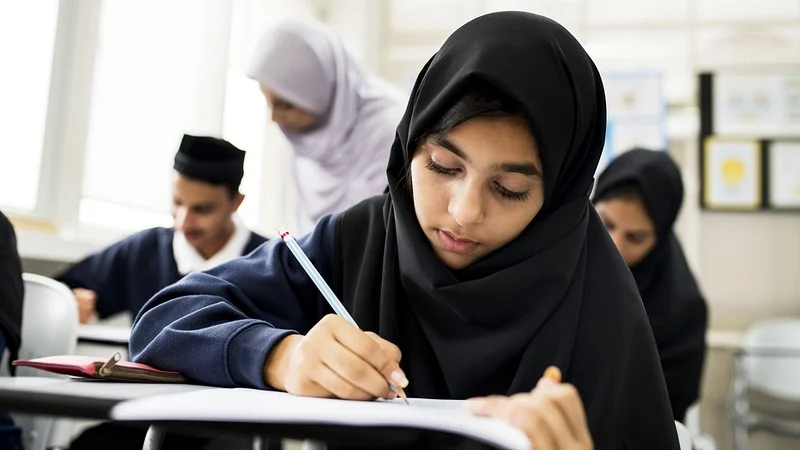Report Indicates Promising Trends Amid Challenges in Educational Accessibility and Infrastructure
HYDERABAD- Telangana has emerged as the top performer in gross enrolment ratio (GER) among Muslim students pursuing higher education in India, boasting an impressive average of 33.6%. This revelation, according to a study conducted by the National Institute of Educational Planning and Administration at Delhi University, places Telangana significantly ahead of Tamil Nadu, which holds the second position with a GER of 27.6%.
GER serves as a critical metric for assessing the proportion of individuals enrolled in educational institutions relative to the potential enrolment at that level. Alongside Telangana and Tamil Nadu, other top-ranking states and Union Territories include Punjab (26.9%), Puducherry (25.7%), Kerala (20.3%), and Goa (19.5%).
The report, guided by former professor Arun C Mehta, sheds light on the opportunities available to Muslim youth aged between 18 to 23 across various states. S Q Masood, an academic and community activist, commented on the findings, stating, “They indeed indicate progress over the years within the Muslim community. In fact, we have also seen more students continuing their education after Class 12 and pursuing fields like commerce and arts including BBA, BA, BCom.”
Masood emphasized the challenges faced by Muslim students, particularly in gaining admission to competitive fields such as medicine and engineering. He noted, “Intense competition in medical and engineering fields poses a challenge, especially for Muslim students from government schools, where most of the students from underprivileged sections study. Reservation is also a concern. Making slight adjustments in these areas could propel us towards achieving at least a 50% GER in the future.”
The report highlights a notable gender disparity in GER, with Telangana showcasing a higher GER among Muslim girl students at 34% compared to boys at 33%. The data, extracted from the Unified District Information System for Education Plus and the All India Survey on Higher Education for the years 2020-21 and 2021-22, under the oversight of the Union Ministry of Education, underscores the need for targeted interventions to address this gap.
Rubina Nafis Fatima, representing the SAFA Foundation dedicated to empowering Muslim women, expressed concerns over the accuracy of the numbers, citing the scarcity of higher learning institutions in areas like the Old City. Fatima emphasized the importance of additional institutions and improved public transport to encourage more women to pursue higher education.
Experts, while acknowledging Telangana’s commendable performance, maintained that overall enrolment ratios remain relatively low, with the state’s enrolment in higher education averaging at about 40%. Mohammad Asif Sohail, an academic and activist, stressed the necessity for better infrastructure, quality teaching staff, and exposure to extracurricular activities to enhance opportunities for students.
Telangana’s leadership in Muslim student enrolment reflects a positive trend in educational inclusion. However, addressing challenges related to accessibility and infrastructure is crucial for ensuring equitable access to higher education opportunities for all segments of society.

